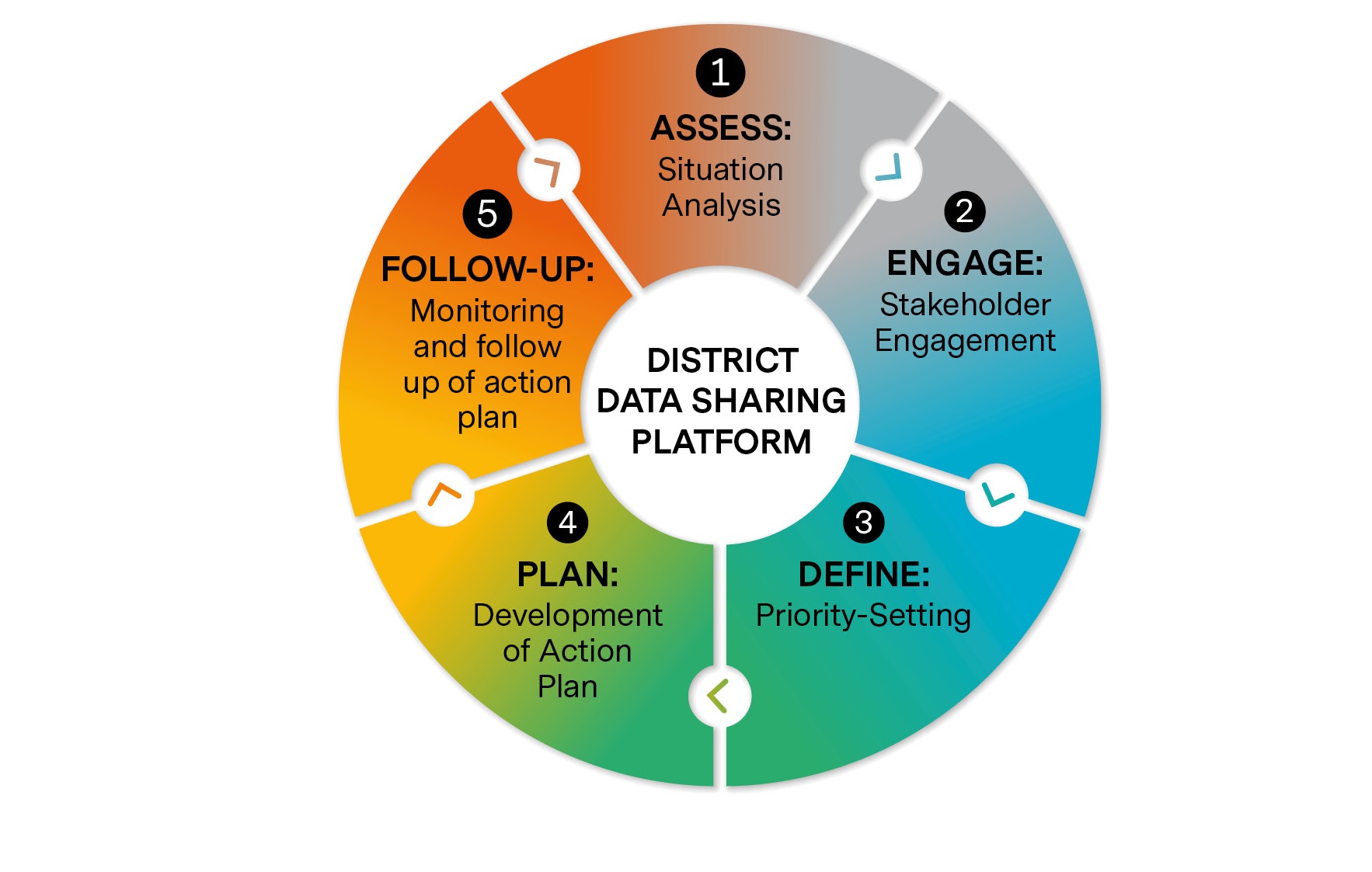Developing the Data Informed Platform for Health strategy
The DIPH aims to enable district-level managers to make structured decisions, using elements of quality decision-making: defining problems using a health-system framework; reviewing all available data and evidence; considering alternative options for health-service solutions; value-based prioritisation; and a consultative process to develop a feasible action plan, commit to it, and follow up. The strategy has three main elements:
- Identifying and convening stakeholders in a virtual platform to deliberate on issues. Membership of this virtual platform was flexible according to the nature and needs of the problem in focus.

- Organising stakeholder meetings in five-step cycles (see Figure above): Assess, Engage, Define, Plan, and Follow-up. These five steps together comprise one cycle and, in practice, took about four months to complete. Each cycle looked at a specific health theme identified in the early stages of the cycle itself.
- A digital interface so that all involved could regularly review data and check on progress.
We developed a package of job aids and guidelines for district health officers and staff in administrative and managerial roles, which included a training handbook, structured forms, and a digital interface.
‘When I compare the time before DIPH came and now … every decision is data-driven. We conduct a close follow-up until what we have planned is achieved. This is what I call change.’
District M&E officer
Implications
In the context of DHIS2, the Data Informed Platform for Health strategy can improve district-level data use and structured decision-making in Ethiopia.
